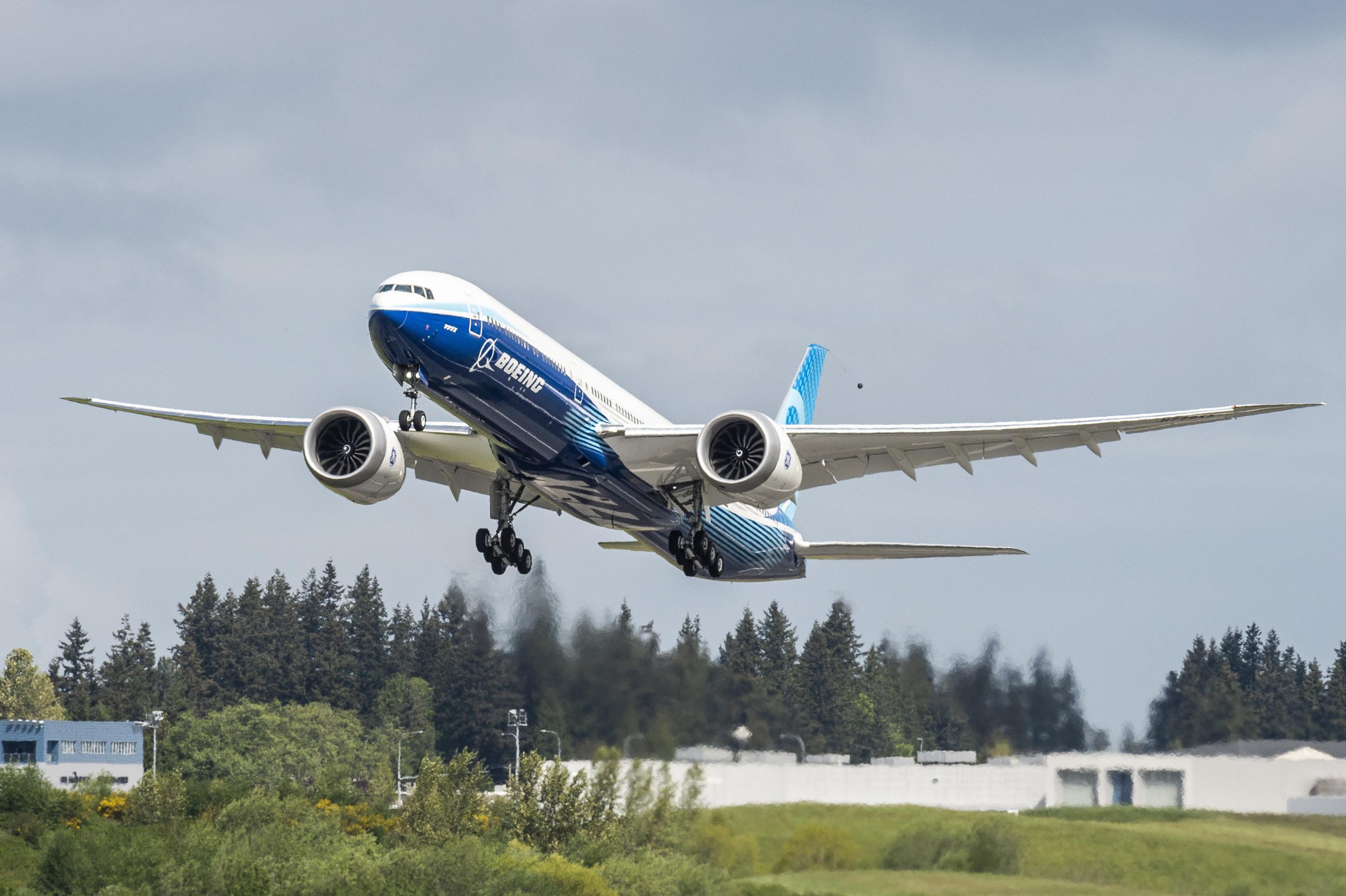
Inmarsat is developing a “smart pipe” satellite communications (satcom) infrastructure for the Boeing 777X that independently allocates bandwidth for multiple, disparate applications.
The system’s smart-pipe functionality allows for the delivery of services across Inmarsat’s L-band Swiftbroadband-Safety (SB-S) network for the flight deck and Ka-band GX Aviation network for the cabin. Each implementation requires network-specific hardware.
The system has been tested with “promising” results in Boeing’s 777 Integrated Aircraft Systems Lab and on board the aircraft, Inmarsat said June 24. The company provided a photo of the second 777X test aircraft that flew from Everett, Washington, for the first time on April 30.
“This is a significant milestone in developing the truly connected aircraft and reinforces Inmarsat’s key role in serving the aviation industry with a suite of operational and passenger connectivity services,” Inmarsat Aviation president Philip Balaam said.
Separating safety-critical flight deck communications from cabin in-flight connectivity systems is key to any infrastructure that supports both. Data traffic at SBS-S and GX terminals is directed to separate satellites and through separate and segregated equipment within the respective L-band or GX ground infrastructure, Inmarsat said.
Aircraft control domain traffic over SB-S—including for controller-pilot data link communications and position reporting—is protected through the implementation of an air-to-ground virtual private network tunnel that is mutually authenticated between the satellite terminal on the aircraft and ground security gateways.
“The SB-S platform is completely isolated from any other systems accessible to passengers and is certified for the exchange of safety-critical information,” Inmarsat said.
Asked if the satcom infrastructure is based on industry standards, Inmarsat noted that Honeywell’s Jetwave GX terminal conforms with the ARINC 791 specification for virtual local area network (VLAN) segregation of Ku/Ka-band airborne terminal equipment. The company said it is “following commercial best practices” to ensure VLAN segregation and end-to-end security between internet protocol-based networks, the aim of the ARINC 848 specification.
Inmarsat declined, however, to provide a schematic of the smart-pipe satcom infrastructure. “This information is commercially sensitive and not available for sharing publicly at this stage,” the company said.





